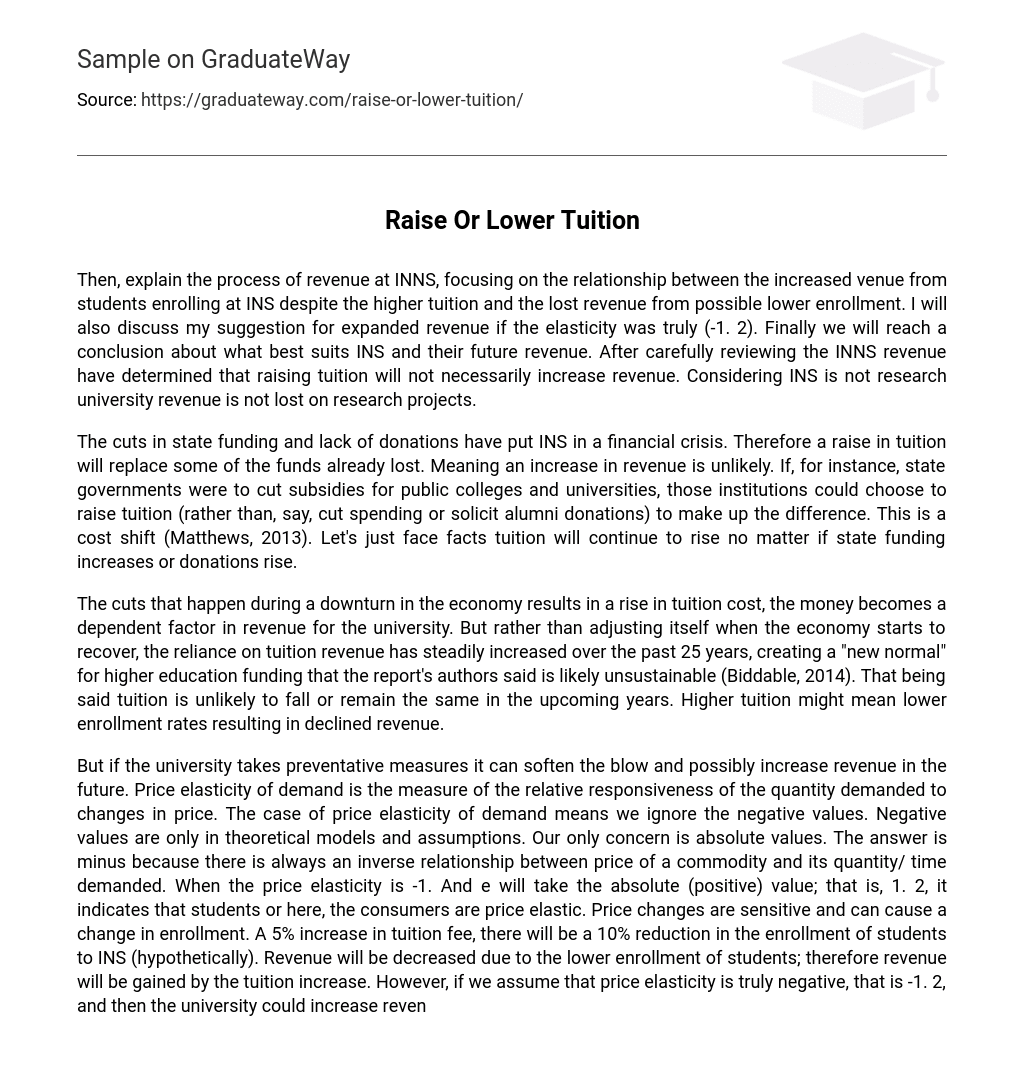Then, explain the process of revenue at INNS, focusing on the relationship between the increased venue from students enrolling at INS despite the higher tuition and the lost revenue from possible lower enrollment. I will also discuss my suggestion for expanded revenue if the elasticity was truly (-1. 2). Finally we will reach a conclusion about what best suits INS and their future revenue. After carefully reviewing the INNS revenue have determined that raising tuition will not necessarily increase revenue. Considering INS is not research university revenue is not lost on research projects.
The cuts in state funding and lack of donations have put INS in a financial crisis. Therefore a raise in tuition will replace some of the funds already lost. Meaning an increase in revenue is unlikely. If, for instance, state governments were to cut subsidies for public colleges and universities, those institutions could choose to raise tuition (rather than, say, cut spending or solicit alumni donations) to make up the difference. This is a cost shift (Matthews, 2013). Let’s just face facts tuition will continue to rise no matter if state funding increases or donations rise.
The cuts that happen during a downturn in the economy results in a rise in tuition cost, the money becomes a dependent factor in revenue for the university. But rather than adjusting itself when the economy starts to recover, the reliance on tuition revenue has steadily increased over the past 25 years, creating a “new normal” for higher education funding that the report’s authors said is likely unsustainable (Biddable, 2014). That being said tuition is unlikely to fall or remain the same in the upcoming years. Higher tuition might mean lower enrollment rates resulting in declined revenue.
But if the university takes preventative measures it can soften the blow and possibly increase revenue in the future. Price elasticity of demand is the measure of the relative responsiveness of the quantity demanded to changes in price. The case of price elasticity of demand means we ignore the negative values. Negative values are only in theoretical models and assumptions. Our only concern is absolute values. The answer is minus because there is always an inverse relationship between price of a commodity and its quantity/ time demanded. When the price elasticity is -1. And e will take the absolute (positive) value; that is, 1. 2, it indicates that students or here, the consumers are price elastic. Price changes are sensitive and can cause a change in enrollment. A 5% increase in tuition fee, there will be a 10% reduction in the enrollment of students to INS (hypothetically). Revenue will be decreased due to the lower enrollment of students; therefore revenue will be gained by the tuition increase. However, if we assume that price elasticity is truly negative, that is -1. 2, and then the university could increase revenue by raising tuition.
Students’ enrollment would be remaining somewhat the same even with the increased tuition rates. A rise in tuition is not a good solution for increasing the multiversity total revenue. If I were a consultant of INS, I would not suggest higher tuition fees on my students. Rather I would suggest a drop in tuition to try to obtain more students in order to compensate for lower tuition. I would try to reach nearby students in lower income areas and reach out to them encouraging them to enroll with the promise of lower tuition rates.





